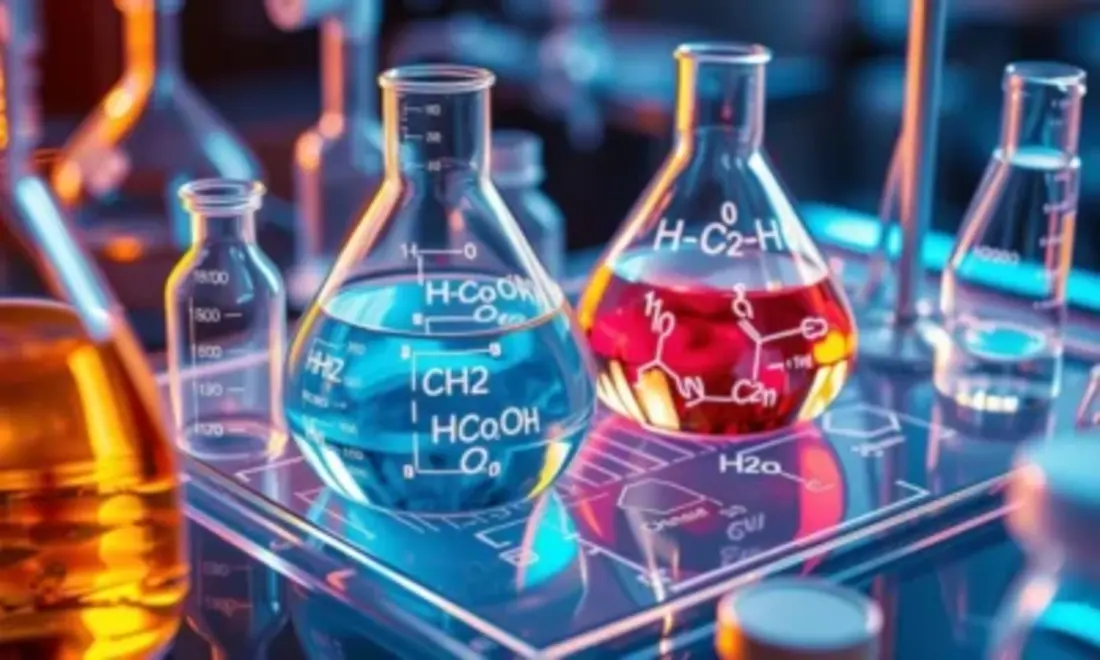Introduction to HCOOCH CH2 H2O
The world of chemistry is full of intriguing compounds and molecules that play significant roles in everyday life, ranging from the food we consume to the products we use. Among the many molecular formulas, “HCOOCH CH2 H2O” represents a combination of three important components: formic acid, methanol, and water. In this article, we will break down each of these components, examine how they interact with each other, and explore the practical implications of this combination.
Breaking Down the Components of HCOOCH CH2 H2O
Before diving deeper into the compound, it’s essential to understand what each part of “HCOOCH CH2 H2O” represents.
- Formic Acid (HCOOH): The “HCO” part of the formula refers to formic acid, the simplest carboxylic acid. Formic acid is commonly found in ants and is produced in the body as a metabolic intermediate. It has a distinctive pungent odor and is often used in leather production, textiles, and as a preservative in agriculture.
- Methanol (CH3OH): The “OCH” part represents methanol, a simple alcohol. Methanol is commonly used as a solvent, antifreeze, and fuel. It is one of the most important chemicals in industrial applications, although it is toxic when ingested.
- Water (H2O): The “H2O” at the end of the formula signifies water, a ubiquitous compound in both nature and human life. Water plays a crucial role in chemical reactions, biological processes, and is essential for life.
When combined, formic acid, methanol, and water can lead to interesting chemical reactions and compounds, making this molecular combination relevant in various industrial processes.
The Role of Formic Acid in HCOOCH CH2 H2O
Formic acid is a simple carboxylic acid with several significant roles in chemistry. It is reactive and often involved in esterification reactions, where it reacts with alcohols to form esters. In the case of “HCOOCH CH2 H2O,” formic acid can react with methanol in the presence of water, leading to the formation of an ester called methyl formate (HCOOCH3).
Methyl Formate: The Result of HCOOCH CH2 H2O’s Reaction
Methyl formate (HCOOCH3) is an ester formed through the esterification of methanol with formic acid. The reaction takes place as follows:HCOOH+CH3OH→HCOOCH3+H2O\text{HCOOH} + \text{CH3OH} \rightarrow \text{HCOOCH3} + \text{H2O}HCOOH+CH3OH→HCOOCH3+H2O
This reaction produces methyl formate (HCOOCH3) and water. Methyl formate is a volatile liquid with a pleasant, fruity smell and is used as a solvent, a flavoring agent, and in the production of plasticizers and pharmaceutical compounds.
In the context of “HCOOCH CH2 H2O,” we can see that water is both a byproduct of this esterification reaction and a participant in the reaction, facilitating the process. This is a classic example of how chemical reactions in aqueous solutions can lead to valuable products.
The Role of Methanol in HCOOCH CH2 H2O
Methanol is a versatile chemical that serves as both a solvent and a precursor in many industrial processes. When mixed with formic acid, methanol acts as the alcohol that reacts with the carboxyl group of formic acid to produce an ester.
Methanol’s role in this molecular combination is essential for the formation of methyl formate. Methanol is often used as a base in the esterification process because of its ability to react with carboxylic acids, which is a foundational reaction in organic chemistry.
Moreover, methanol’s presence in “HCOOCH CH2 H2O” indicates its role as a potential fuel or solvent, especially in the industrial production of methyl formate and related compounds. Methanol is widely used in industries like energy, pharmaceuticals, and chemical manufacturing.
Water’s Role in the HCOOCH CH2 H2O Reaction
Water, a critical molecule in the “HCOOCH CH2 H2O” combination, plays a crucial role in both the chemical reaction and the biological processes involved. In the esterification reaction between methanol and formic acid, water is produced as a byproduct:HCOOH+CH3OH→HCOOCH3+H2O\text{HCOOH} + \text{CH3OH} \rightarrow \text{HCOOCH3} + \text{H2O}HCOOH+CH3OH→HCOOCH3+H2O
Water helps drive the reaction towards the formation of methyl formate. In many organic reactions, water serves to dilute the reaction mixture, making the process easier to manage. It can also act as a medium for the reaction, ensuring that the reactants interact effectively.

In addition, water is essential for the separation and purification of methyl formate after the reaction. Water is often used to wash away unreacted materials or impurities, ensuring that the final product is pure and usable.
Applications of HCOOCH CH2 H2O Compounds
The reaction that involves “HCOOCH CH2 H2O” and leads to the formation of methyl formate has several industrial applications. Let’s explore a few of them:
- Solvents and Industrial Chemicals: Methyl formate, the product of the reaction between formic acid and methanol, is commonly used as a solvent in industrial applications, such as the production of coatings, adhesives, and pharmaceuticals.
- Energy: Methanol itself is used as a fuel, particularly in fuel cells and as an alternative to gasoline. The combination of methanol with formic acid in a controlled reaction can produce methyl formate, which has uses in chemical manufacturing.
- Food and Flavoring: Methyl formate is used as a flavoring agent in food and beverages. Its fruity aroma makes it desirable in flavoring products, perfumes, and cosmetics.
- Pharmaceuticals: The chemical processes involved in producing compounds from formic acid and methanol, including methyl formate, are essential in the pharmaceutical industry. Methyl formate is used as an intermediate in the synthesis of various drugs and chemical agents.
The Chemical Reaction: Mechanism and Understanding
The esterification reaction between formic acid and methanol, facilitated by water, is a fundamental reaction in organic chemistry. This reaction is classified as a condensation reaction, where two molecules join together, and a molecule of water is eliminated.
The general mechanism involves the following steps:
- Protonation of the Carbonyl Group: The carbonyl oxygen of formic acid becomes protonated, making the carbonyl carbon more electrophilic and susceptible to nucleophilic attack by methanol.
- Nucleophilic Attack by Methanol: Methanol, with its nucleophilic oxygen, attacks the electrophilic carbonyl carbon of formic acid, leading to the formation of a tetrahedral intermediate.
- Elimination of Water: The intermediate formed undergoes the loss of a water molecule, leading to the formation of methyl formate.
- Regeneration of Catalyst: In many cases, an acid catalyst such as sulfuric acid is used to facilitate the reaction, which helps in the elimination of water and drives the reaction forward.
Environmental and Safety Considerations
While methyl formate and other chemicals derived from formic acid and methanol are useful, they come with safety and environmental concerns. Methanol is toxic, and exposure to it can lead to severe health issues. Furthermore, both formic acid and methyl formate are flammable and must be handled with care in industrial settings.
Proper safety measures, such as ventilation, protective gear, and storage in safe containers, are essential to ensure the safe handling of these chemicals. Additionally, environmental regulations must be followed to prevent the release of these chemicals into the environment, as they could pose risks to both human health and wildlife.
Conclusion: The Importance of HCOOCH CH2 H2O in Chemistry
In summary, “HCOOCH CH2 H2O” represents an important combination of formic acid, methanol, and water that leads to the formation of methyl formate. This simple ester has diverse applications in industries such as food, pharmaceuticals, and manufacturing. Through the esterification reaction, we can see how fundamental chemical reactions drive the production of essential compounds used in a variety of sectors.
Understanding the interactions between formic acid, methanol, and water is key to unlocking their potential in industrial processes, highlighting the significance of organic chemistry in real-world applications. As we continue to advance our knowledge of these reactions, new uses and efficiencies will likely emerge, further underscoring the vital role these compounds play in modern science and industry.

